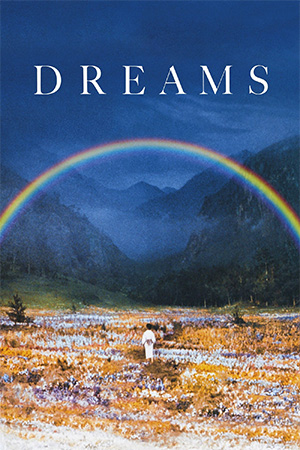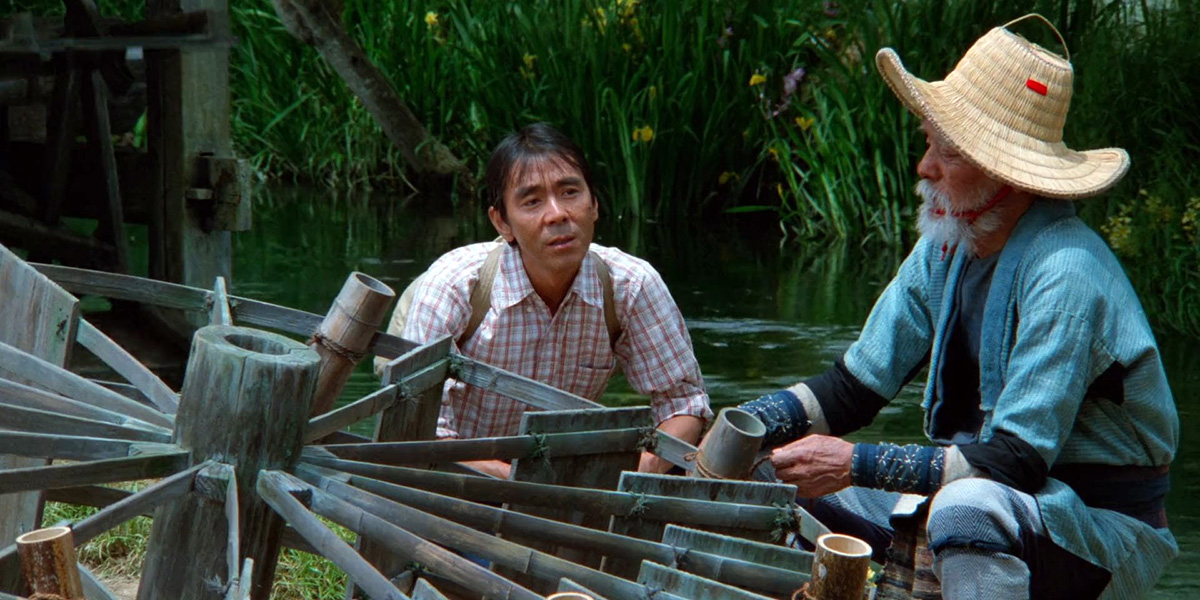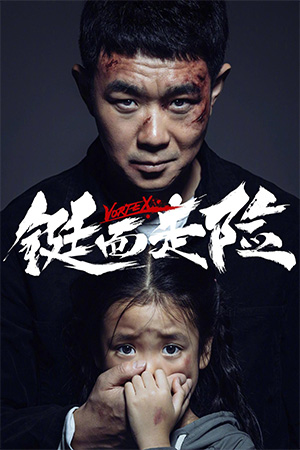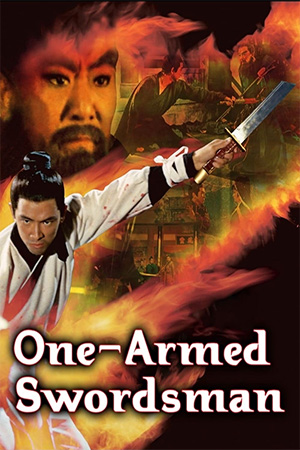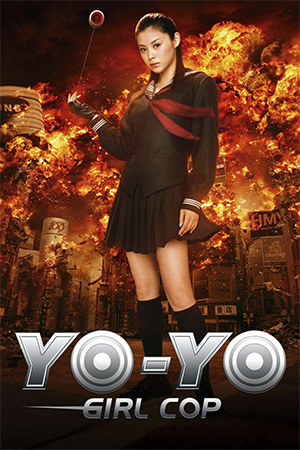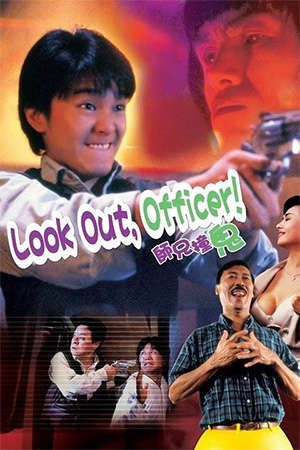‘Dreams’ anthologises eight vivid stories of a man (or a boy) encountering either natural splendour or manmade horror. They are only tentatively held together by these interests, and ‘Dreams’ is more a collection of Kurosawa’s favourite unfilmed images. It’s a postcard movie; A film that would work just as well (or better) as a set of stunning postcards. The narrative and sonic stylings lag behind the excellent visuals, and the film isn’t really more than the sum of its parts. It has the same issue that Hou Hsiao-hsien’s ‘The Assassin’, Wim Wenders’ ‘Until the End of the World’, and some of Zhang Yimou’s films have– They’re the kind of films that look gorgeous in a Twitter post, but disappoint when these very screenshots turn out to be the film’s highpoints.
The first dream, ‘Sunshine Through The Rain’, is of a boy who wanders into the woods to watch the wedding of the fox spirits. He quietly watches the painted procession march through the fog and giant cedars, and later he walks through a many-coloured field of flowers with a rainbow overhead. These two moments look lovely, but they’re stretched thin over a too-generous ten minutes and padded out with extra explaining. Each of the eight stories are like this: a man wanders into something, listens to some exposition, watches a wondrous scene and a new dream begins. Do dreams need explanation? Can we not see exhausted men trudge through a blizzard and know they’re in danger? There is little to interpret from the surprisingly straightforward dreams– That Kurosawa loved nature, feared atomic power, and dreamt of the war’s fallen soldiers (or not, that dream was Ishiro Honda’s). Even so, two of the dreams elaborate on Kurosawa’s philosophy for the film (and these are the same two you’ll see clipped for Instagram reels or Tiktoks).
The centrepiece (or ‘eye of the duck’), stars Vincent Van Gogh (played by Martin Scorcese) – Kurosawa was once a painter, and the images of ‘Dreams’ are boldly coloured just like the expressionist broad strokes of Van Gogh; Dolls and dead soldiers have their faces painted with pure white pancake makeup, storm storms are a deep blue, and demons roll among fluorescent red pools – This Van Gogh declares that he must paint, that “I work, I slave, I drive myself like a locomotive”. And of course, Kurosawa was the same, but Van Gogh also hits on something that ‘Dreams’ fails at: “A scene that looks like a painting does not make a painting. If you take the time to look closely, all of nature has its own beauty”. The dreams unduly dramatise its scenes of natural beauty– When a boy is shown an orchard in bloom one final time, the camera cuts almost frantically about to splash the bright pink in the viewer’s eyes. Unlike the man bathing in the tall grass, while a grub crawls along his finger in Tarkovsky’s ‘Stalker’, ‘Dreams’ scenes are too focused on appearing like paintings than scenes in a film. Only in the final dream does Kurosawa take Van Gogh’s advice to heart, where he watches the scenery, as a light breeze passes among the flowers, and waterwheels spin amid a flowing stream.
It’s by this stream that an old man expounds on a return to naturalism– “I wouldn’t like nights so bright that you can’t see the stars” – but he could just as well be speaking of the film and it’s follies: That the stellar images of ‘Dreams’ are weighed down by the overinflated stories surrounding them, which often place attention on the wrong details; And that the images are so tightly controlled that the rich details and diegetic sounds that bring life to a film are missing. Instead of immersion, the two hours often trips into boredom, despite the wondrous visuals.
- The World Sinks Except Japan - June 13, 2023
- Dreams - May 4, 2023

